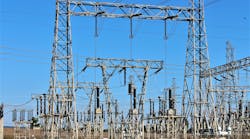If you’re like me, you may be suffering a bit from Smart Grid Fatigue. Everything is becoming ‘smart’ or ‘intelligent’ – vague terms that help carry the flag for ‘modernizing’ (another vague term) the electric power system. That fatigue is starting to push the industry to embrace the word 'optimal' rather than smart. But we better not think of optimization of the power system as only making it smarter. Optimization encompasses a far larger scope.
Actually, I think I was tired of the term 'smart', even before it became popular. In the 1980’s I led a project team to develop what we called a “smart substation”. The idea was to somehow collect real-time customer usage information, local electric load data, outage notification, transformer temperatures, weather data and anything else that we could get our hands on. We planned to bring all the data back to a central distribution substation. There we would have a mini-computer (huge compared to today’s desktop) and custom software which could somehow optimize operations, reduce outage times and otherwise accomplish most of a distribution engineer’s dreams.
There wasn’t a lot of off-the-shelf equipment available that would operate in the harsh system environment. High frequency electromagnetic radiation from an insulator flashover or the opening of an air switch would blow out op amps. And other than the phone line, we had little in the way of communication ability to get all the data back to the substation. So we worked with several universities to develop special sensors. Then we partnered with several start-up wireless communication companies. We did the best we could with what we had, which included hauling a mini-mainframe computer around California’s Central Valley in a pick-up truck.
Over several years we accomplished many of our goals and wrote a number of reports. But at some point we realized that even if we had all possible data, perfectly working algorithms and high-bandwidth communications, we still wouldn’t have much impact on customer-perceived service value. The problem was that we needed better data connections - not only between customers and neighboring distribution substations, but also with the higher voltage transmission system and, if we wanted to do it right, also with central generation and system operators.
Although our substation project was certainly above average in “smartness”, it just couldn’t do much to affect grid operations. So, we just relabeled it as a “well-informed” substation, hauled our mini-computer back to headquarters, wrote a final report, and moved on to other challenges…
Of course, our efforts weren't unique. Others across the nation were building smart substation demonstrations of one sort or another and most ended up with more or less the same results.
We unknowingly demonstrated that smart doesn't necessarily mean effective or optimal.
Well, that was years ago and now we have technology to make almost every part of the system 'smart', but having that capability doesn't mean we need to do it. What we really want is an optimal system. One that provides the best balance of technical performance, customer satisfaction, and utility financial success - the three legs of the electric utility success stool.
Our industry doesn't have a track record of providing that balance. It hasn't had to. Instead, regulated utilities are what they are today because of regulatory demands and constraints.
First and foremost, regulators want utilities to stay financially stable. You really don’t want your local power company to go broke and turn off the lights (literally) as it leaves. You also want a utility to make enough profit to attract investors (through bonds and shares) so that the infrastructure can be maintained and expanded to meet community growth.
To that end, the system is designed so that utilities make their profits on a more-or-less guaranteed rate of return on capital investments. Rates are adjusted by state regulators, generally every three years, and include pass-through changes in fuel costs, operating and maintenance expenses, and a return on non-depreciated construction such as power lines.
What does this have to do optimizing the power grid? Everything, because the regulatory focus has been the investors' rate of return in an expanding electric infrastructure. The incentive has been to build big, make big bucks, and build big again. The key word was big. Big power plants and big transmission were the topics of utility board meetings and rate case wrangling.
But not the less capital intense distribution system: For many companies, that's where the penny pinching was centered for almost a century. Ironically the distribution system also accounts for most of the customer perception of the system as a whole. Even more ironically, for some utilities in so-called deregulated states the distribution system, warts and all, has become their single greatest business asset!
No wonder the distribution infrastructure, long neglected, now offers a virtual money pit of opportunities for technology improvement while adding to the capital rate base. A win-win opportunity that opens the door wide for smart grid technologies.
No doubt we're going to see the electric grid jump through performance hoops like never before.
But what about another leg of the stool - customer perception? Are we making progress there?
Next month: The Optimal Grid: Being Smart Isn't Enough – Part II
Paul Mauldin
Editor
[email protected]
About the Editor
Paul earned his B.S. and an M.S. in electrical engineering from the University of California-Berkeley and is a registered professional engineer. He has worked in the energy industry for more than 25 years, developing and implementing advanced energy technologies. As research director for Pacific Gas and Electric Co. he pioneered methodologies used in the design, maintenance and control of energy delivery systems. As a consultant he has provided guidance to utilities and the vendor community, nationally and internationally. Email him with comments.

